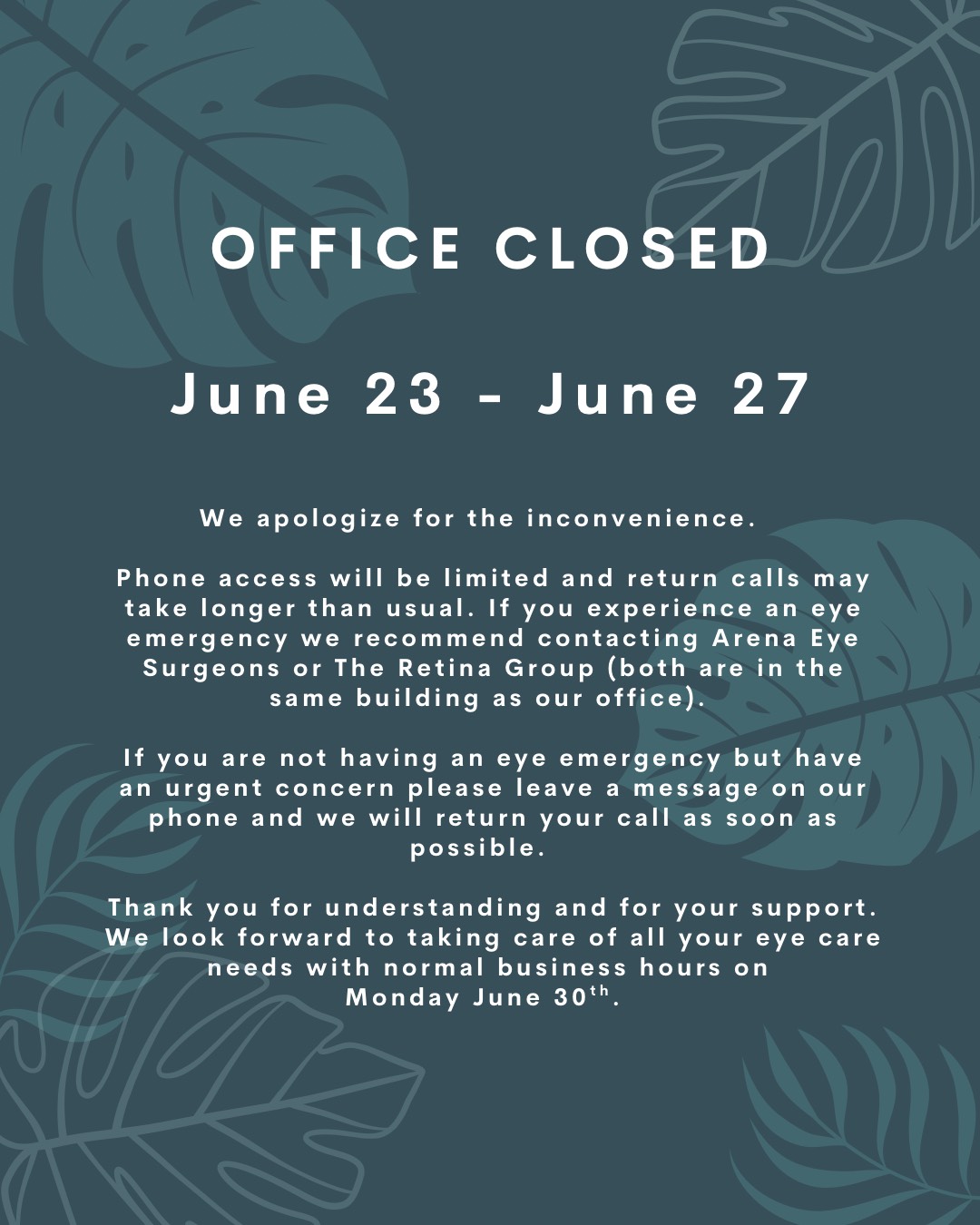
Our first round of eye myths sparked even more questions! Read on to learn the facts about common eye myths we've all heard:
1) Reading in the Dark Will Make Your Eyes Worse - FALSE
Your parents may have told you this when you were young, but it is a myth. Reading in the dark (or watching TV in the dark) does not make your vision worse. It can cause eyestrain and eye fatigue because it is more work for our eyes to see clearly in the dark, but it does not cause an increase in prescription. Children's pupils are larger, and they slowly decrease in size as we get older. So, children actually get much more light to their retina in dark settings. What may feel and look very dark to someone in their 60's may not seem too bad to a child.

2) Light Colored Eyes Are More Sensitive to Lights- FALSE (sort of!)
Every person has a layer of pigment behind our iris that helps determine how much light passes through and makes it to the retina. The amount of pigment of this layer does not always correlate with eye color. So theoretically a person with darker eyes may have a thinner layer of pigment behind the iris and be sensitive to lights.
We also have pigment in our retina that absorbs stray light and glare. I have found that patients with light irises tend to have less pigment in their retina. This is not always the case but for those cases that are true, it means these patients are more sensitive to glare and light. Often times, patients with darker irises have more pigment in their retina and are therefore less sensitive to lights.
3) My Contact Lens Could Get Stuck Behind My Eye - FALSE
Luckily, our lid tissue attaches 360 degrees to the midline of the eyeball. This means that a contact lens CANNOT get stuck behind your eye. It may get tucked in tightly under your lid and it may be too difficult for you to remove on your own, but your eye care professional can always get it out. Luckily, contact lenses naturally gravitate to the center of our cornea (the front surface) so this rarely happens!

4) If You Have Dry Eye Disease and Artificial Tears Don't Work for You, You Just Have to Live With It - FALSE
This is another situation that may have been true in the past but is no longer the case! There are multiple over-the-counter, prescription, and in-office treatments that can treat Dry Eye Syndrome/Ocular Surface Disease and provide lasting results. Dry Eyes can cause discomfort, redness, glare, light sensitivity, blur, headaches, pain, and fatigue. You do not have to live with these symptoms and relief is possible! There are many causes of Dry Eye Syndrome/ Ocular Surface Disease, so a thorough evaluation is necessary to determine the best treatment plan for each patient.
Hopefully, this information has helped clear up some misconceptions about vision and eye health. Have more questions? Please call us! We are happy to help!











